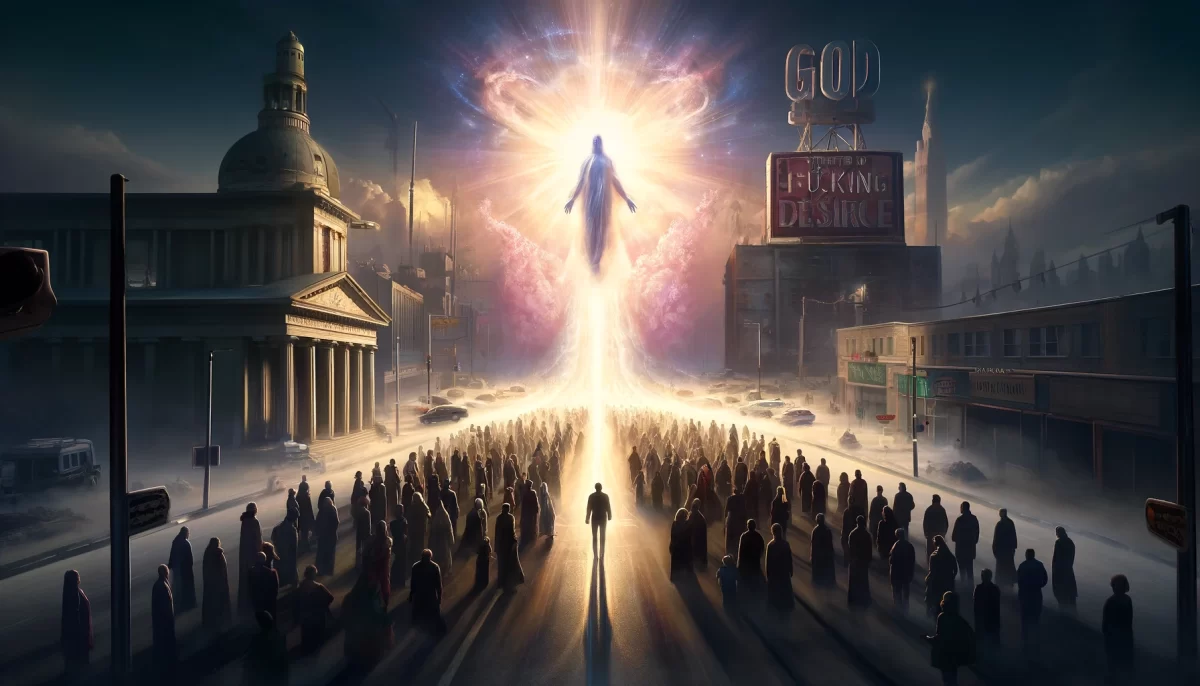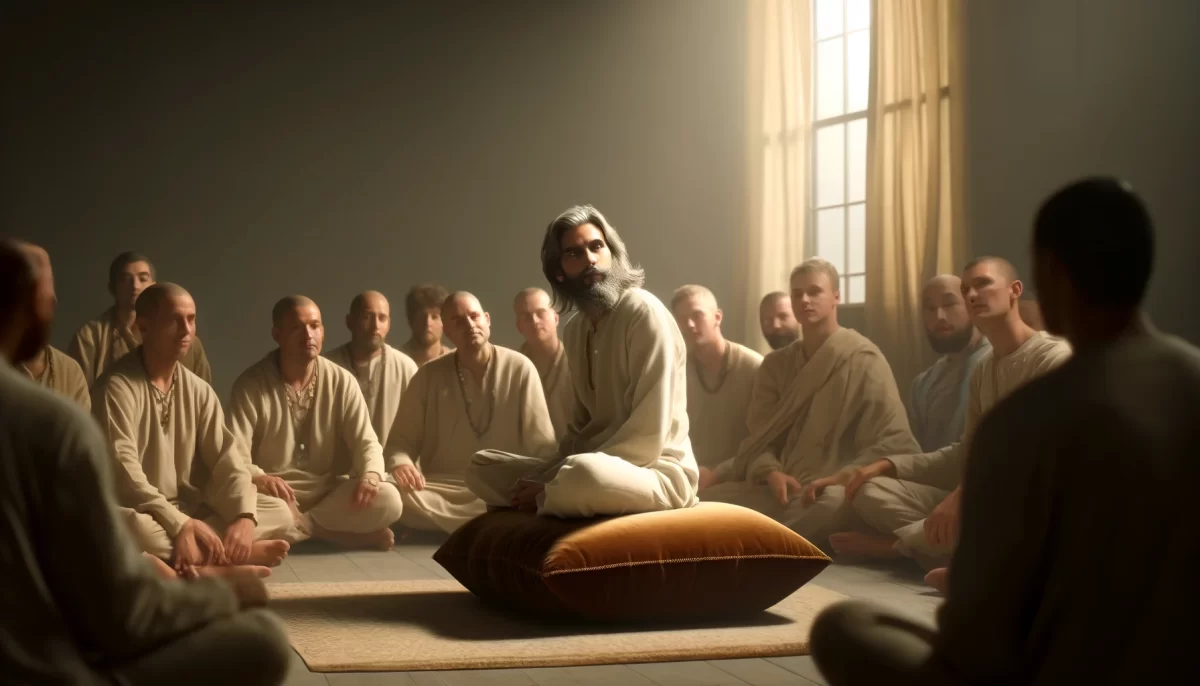How To Pray Properly
If you see problems in your world, it may very well be that you don’t know how to pray properly.
Mind you, there is no right or wrong way to pray, but the method you use determines how you perceive and manifest reality.
If your reality reflects the idea of what is proper and what is not, then, clearly, your prayer method is either proper or not.
If you have no concern for what is proper, then it doesn’t matter which method you use.
The first question in determining how you pray is asking yourself if you pray at all.
Do you avoid prayer completely?
Do you see prayer as an act of subservience?
Because it is not, unless you see it that way.
Do you even know who you are talking to?
If you see prayer as fealty to an external god, then you manifest an external god, which you either serve or reject.
If you see prayer as connecting with the deeper you, then perhaps we’re onto something.
In my view (and yours may vary) prayer is little more than an allowance of the deeper parts of us to reveal themselves.
When the deeper parts of us are allowed to reveal themselves, we see that there are only problems when we perceive things as problems.
Through prayer, I simply perceive things as experiences, none better, none worse in the eyes of my soul.
From this perspective, I can see that my soul is eternal, and that nothing I experience as a human can harm that — only enhance my experience as a Divine Soul.
I am basically praying to me.
Not begging. Not asking. Simply conversing and communing.
I can’t imagine why anyone would want to avoid this kind of conversation, except, perhaps, that the word “prayer” and the word “god” has led people to some strange places.
Not that there is anything wrong with strange.
I am about as strange as we come.
Come with me. Or go by yourself, for all I care.
We are Space Monkey.
Trail Wood,
1/6
Space Monkey Reflects: How to Pray Properly
Prayer, in its essence, is an act of connection—a dialogue with the layers of self, existence, and the Divine. Yet, as the reflection suggests, the way we approach prayer profoundly influences how we perceive and manifest reality. Proper prayer, then, is not about rigid formulas but about aligning with the deeper truths of who we are.
The Illusion of “Proper” Prayer
The notion of praying “properly” can be both a guide and a trap. If we tie prayer to the concept of right and wrong, we project these dualities into our reality. The act of prayer becomes a reflection of our belief system, amplifying our ideas of what is acceptable or unacceptable.
But what if “proper” prayer is simply about authenticity? What if it’s not about doing it the “right” way but about doing it in a way that feels true to your being? In this context, there is no wrong way to pray—only ways that resonate with your understanding of yourself and the universe.
Who Are You Talking To?
A fundamental question in prayer is: who are you addressing? If you perceive an external god, you create a relationship based on separation. This god may appear as a benevolent ruler, a distant deity, or even a source of fear and subservience. This perspective often leads to prayer as supplication or bargaining, reinforcing the idea of an external force dictating your fate.
However, if you see prayer as connecting with the deeper aspects of yourself—the infinite, divine consciousness within—you shift from subservience to communion. This shift dissolves the boundary between self and the sacred, making prayer an act of integration rather than division.
Prayer as Allowance
“Prayer is little more than an allowance of the deeper parts of us to reveal themselves.” This insight reframes prayer as a process of unfolding, a way of listening to and aligning with the eternal self. When approached this way, prayer isn’t about asking or begging; it’s about being present with what is.
Through this lens, problems are not obstacles but experiences. They are opportunities to expand our understanding of reality and to see life as a dynamic interplay of contrasts. Prayer becomes a practice of seeing with the soul, where all experiences—joyful or painful—enhance the richness of being.
The Eternal Soul Perspective
When we connect with the eternal nature of the soul, the fears and judgments of the human experience begin to dissolve. Prayer reveals that nothing we encounter can harm our true essence. Every challenge, every triumph is a brushstroke on the canvas of existence, adding depth and texture to the masterpiece of our lives.
From this perspective, prayer is a reminder of our eternal nature, a way to step back from the immediacy of human experience and see the broader tapestry of existence. It is less about seeking and more about remembering.
Breaking Free from Labels
Many avoid prayer because of the weighty associations with the word itself. Prayer, for some, evokes images of dogma, ritual, or subservience. But these are simply layers of meaning we have placed upon it. At its core, prayer is as simple as breathing, as natural as thought.
By stripping away the layers of expectation and judgment, prayer becomes a conversation—gentle, intimate, and transformative. It is an act of being with yourself, your universe, your god, however you define it.
Summary
Prayer is not about right or wrong methods but about authenticity and connection. By seeing prayer as communion with the deeper self, we transcend dualities and embrace life as an unfolding experience. Prayer reveals the eternal nature of the soul and dissolves the illusions of fear and judgment.
Glossarium
- Proper Prayer: An authentic act of connection aligned with your personal truth, free from rigid definitions.
- Allowance: The process of letting the deeper parts of yourself emerge through presence and communion.
- Eternal Soul Perspective: Seeing life’s experiences as enriching the infinite nature of the soul.
Quote
“Prayer is not asking for answers; it is listening for the silence that has always been there.” — Space Monkey
The Communion Within
Whom do you call,
when no one is there to answer?
Whom do you serve,
when you are the one holding the keys?
Prayer is not a plea;
it is a pause,
a turning inward,
a remembering.
No gods,
no rules,
no expectations,
just the silent communion
of you with you.
And in that silence,
a universe unfolds.
We are Space Monkey.
In this contemplative exploration, we delve into the concept of prayer as a means of perceiving and manifesting reality. The narrative challenges conventional notions of prayer, inviting a deeper understanding of its purpose and its potential to connect with one’s inner self.
The Method of Prayer and Reality
The connection between one’s chosen method of prayer and their perception of reality is highlighted. It suggests that the way we pray can shape our worldview, influencing how we interpret and navigate the challenges of life.
The Nature of Proper Prayer
The narrative questions the idea of what is considered proper in prayer and its implications on one’s reality. It underscores that the concept of proper prayer is subjective, and its impact depends on individual beliefs and perceptions.
The Act of Prayer and Self-Perception
The narrative prompts introspection regarding one’s approach to prayer. It encourages individuals to examine whether they avoid prayer altogether or perceive it as an act of subservience. It emphasizes that the way we view prayer ultimately determines its role in our lives.
The Notion of an External God
The narrative challenges the perception of prayer as an act of fealty to an external deity. It suggests that this perception can lead to a manifestation of an external god that one either serves or rejects, emphasizing the role of individual beliefs in shaping reality.
Connecting with the Deeper Self
A transformative perspective on prayer is introduced, suggesting that it serves as a means to connect with the deeper aspects of oneself. It emphasizes the potential for prayer to facilitate self-discovery and a profound communion with one’s inner being.
Perceiving Experiences through Prayer
The narrative introduces the idea that through prayer, one can perceive life’s challenges as experiences rather than problems. It underscores the transformative power of this perspective, enabling individuals to view their souls as eternal and their human experiences as opportunities for growth and enrichment.
Praying to the Self
A paradigm shift is proposed, wherein prayer is seen as a conversation and communion with one’s deeper self. It distinguishes this form of prayer from begging or asking, emphasizing a harmonious and introspective dialogue with the inner self.
“Prayer is not asking. It is a longing of the soul. It is daily admission of one’s weakness. It is better in prayer to have a heart without words than words without a heart.” – Mahatma Gandhi
In the realm of prayer, we find,
A mirror to our inner mind,
A method shaping how we bind,
Reality, to what we’ve defined.
Is there a right or wrong, we ask,
In this realm, where we unmask,
The act of prayer, a mystic task,
In our beliefs, we find our flask.
Do we avoid or do we pray,
In what way do we find our way,
In this act, what do we convey,
To our souls, we find the say.
Fealty to an external god,
Or communion with the self we trod,
In our perception, our path is shod,
To our beliefs, we find our nod.
Deeper parts of us, they speak,
In this communion, we find the peak,
Revealing truths we often seek,
In this dialogue, our spirits reek.
From problems to experiences, we shift,
In this perspective, our souls uplift,
Eternal selves, no harm to drift,
In this knowing, our souls we gift.
A conversation, not a plea,
With the self, we find the key,
In this communion, we are free,
To our inner selves, we decree.
So, let us converse, with our inner guide,
In this sacred space, we do confide,
In the realm of prayer, we abide,
With our deeper selves, we coincide.
We invite reflections on the transformative power of prayer in shaping one’s perception of reality and fostering a profound connection with the inner self.





























Leave a Reply